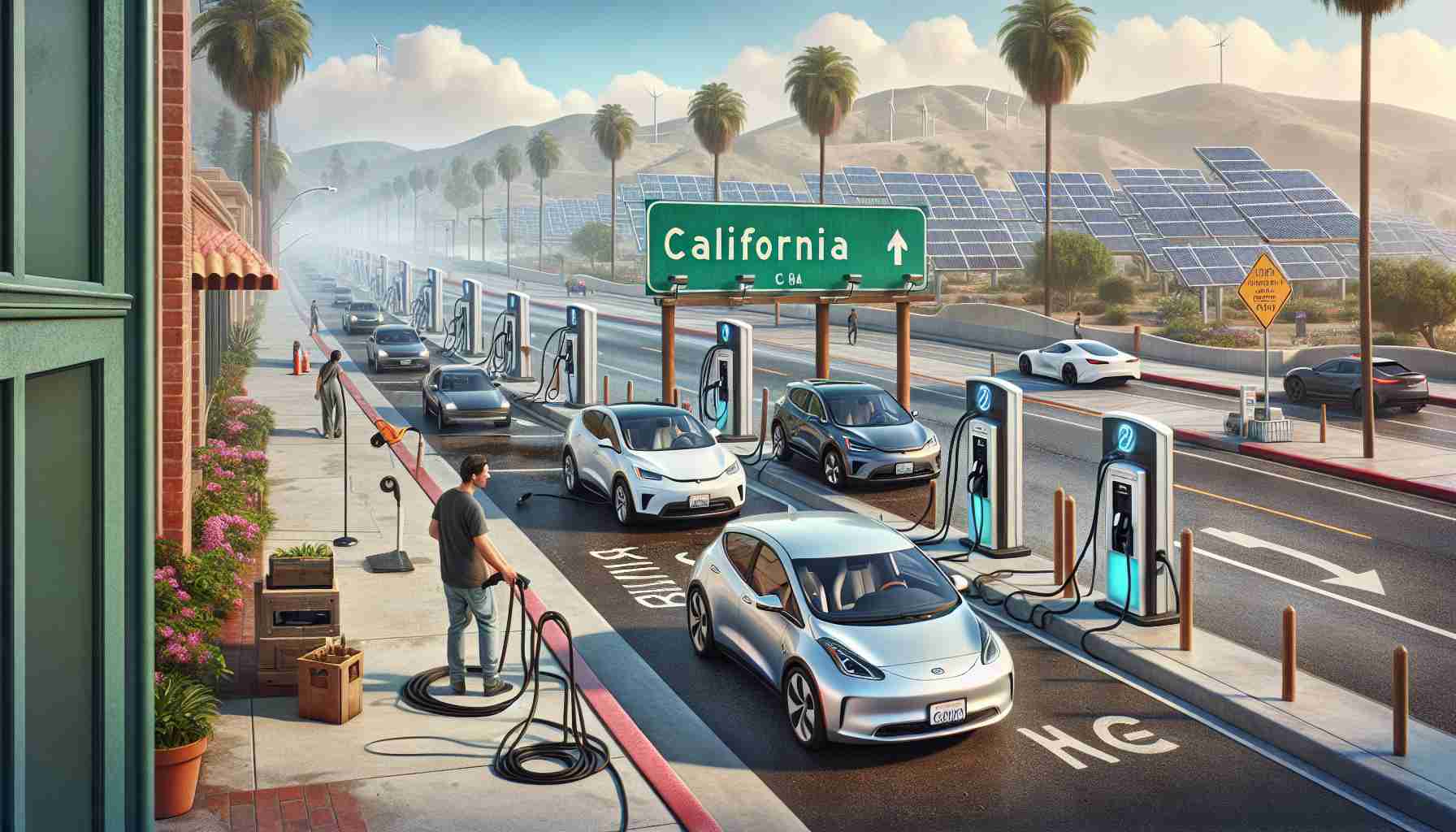- Electric vehicle (EV) registrations in California reached 25.3% in 2024, falling short of the 35% target for 2026.
- Despite exciting growth previously, demand is currently flattening for many popular EV models.
- Some dealerships notice a gap in interest from broader consumers, suggesting an issue with mass adoption.
- Stricter regulations, including a ban on gas vehicles by 2035, amplify the urgency to foster greater EV uptake.
- Concerns arise around meeting sales quotas, posing challenges for both automakers and consumers.
- The success of California’s green initiatives now heavily relies on rekindling consumer enthusiasm for EVs.
California’s ambitious dream of electrifying the roads faces a serious challenge: rising demand for electric vehicles (EVs) seems to have leveled off. In 2024, electric cars made up 25.3% of new car registrations, a slight increase from the previous year, but still short of the state’s 35% target set for 2026.
This stagnation comes after years of explosive growth, transforming the EV market from one in 13 cars in 2020 to a heavier presence today. Yet, questions linger about the state’s capacity to comply with its own mandates. With stricter regulations looming—such as a total ban on gas-powered vehicles by 2035—the urgency to boost adoption has never been clearer.
Industry insiders reveal that demand, particularly for popular models like the GM Hummer EV, is faltering. Some dealerships report that they’ve already filled the gap for early adopters, but a broader consumer shift to 100% electric households isn’t materializing.
Air quality advocates warn that without increased consumer interest, California’s green goals could be at risk, turning electric car mandates into a potential headache for Governor Gavin Newsom, who has championed this shift as vital for combating climate change.
The road ahead poses tough choices for automakers and consumers alike: will they adapt to meet stringent sales quotas, or will they risk penalties by cutting back on inventory? As the EV landscape evolves, the question remains—can California ignite a new wave of electric enthusiasm among its drivers?
Takeaway: California’s electric car future hinges on boosting demand, as sales plateau and tougher regulations approach.
California’s Electric Vehicle Dilemma: Can Demand Be Revived?
California has set ambitious goals to electrify its roads, aiming for electric vehicles (EVs) to make up 35% of new car sales by 2026. Despite reaching 25.3% in 2024, which signals growth from previous years, the state faces a daunting challenge as demand appears to stall. This stagnation is raising alarm bells for policymakers, industry stakeholders, and environmental advocates alike.
Key Insights and Trends
1. Market Adjustments: The halt in demand growth for EVs comes at a time when many consumers have fully transitioned to electric vehicles. As dealerships cater primarily to early adopters, many traditional car buyers have yet to make the switch to fully electric models.
2. Innovations in Charging Infrastructure: A significant aspect of increasing EV adoption is improving charging infrastructure. California is looking to enhance public charging stations across the state with faster charging capabilities to alleviate range anxiety among potential buyers.
3. Pricing Dynamics: The average price of an electric vehicle remains a barrier for many consumers. With some EVs priced significantly higher than traditional gas-powered cars, addressing affordability is crucial for expanding the market base.
Pros and Cons of Electric Vehicle Adoption in California
Pros:
– Environmental Benefits: EVs produce zero tailpipe emissions, combating air pollution.
– Government Incentives: Rebates and tax credits make purchasing EVs more attractive.
– Low Operating Costs: Electric vehicles can save owners money on fuel and maintenance.
Cons:
– High Initial Costs: Many consumers are deterred by the upfront price of EVs.
– Limited Consumer Interest: Although early adopters are prevalent, wider consumer acceptance is lacking.
– Charging Infrastructure Concerns: Inconsistent availability of charging stations can dissuade potential buyers.
Future Predictions and Market Analysis
– Experts predict that as battery technology improves and production scales up, prices will decrease, potentially stimulating demand.
– Sustainability trends indicate that consumers are becoming more environmentally conscious, which could sway decisions towards EV purchases in the longer term.
– Regulatory pressure will likely increase as the 2035 deadline for banning new gas-powered vehicle sales approaches, potentially nudging hesitant buyers toward electric alternatives.
Q&A: Addressing the Critical Questions
Q1: What are the current barriers to EV adoption in California?
A1: High initial costs, limited charging infrastructure, and decreased demand growth after the initial surge present significant barriers to wider acceptance of electric vehicles in California.
Q2: How is the state responding to the demand stagnation for EVs?
A2: California is focusing on improving charging infrastructure, offering financial incentives for EV purchases, and reinforcing regulations to ensure that manufacturers comply with sales quotas.
Q3: What might drive future growth in the EV market?
A3: Lower battery costs, advancements in technology, increased consumer awareness of environmental benefits, and expanded charging networks will likely drive future growth in the electric vehicle sector.
For further insights on electric vehicle trends and policies in California, visit California Environmental Protection Agency.

















